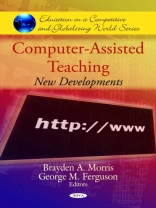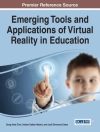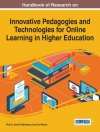Computer-assisted teaching and the learning environments that support it have risen rapidly at the school and college level over recent years. Computer-assisted teaching usually includes multimedia instructional formats, such as animation, video and simulation, and virtual learning environment such as Web CT and Blackboard. In this book, the views of chemistry students on the use of computer-assisted teaching is demonstrated. How the teacher can effectively use his electronic material resources into blending learning activities are shown, which involve a combination of face-to-face interactions and technologically mediated interactions between students and teachers. This book also considers the challenge of producing materials to support conceptual learning in science, and the type of pedagogic models that are needed for successful computer-assisted teaching of science. Moreover, the authors report how the incorporation of information and communications technology (ICT) into a teacher professional development program fostered constructivist teaching/learning practices in school classrooms. In addition, expertise reversal effect relates to the interactions between levels of learner prior knowledge and effectiveness of different instructional techniques and procedures. This book reviews recent empirical findings associated with the expertise reversal effect in multimedia and hypermedia learning environments, their interpretation within a cognitive load framework and implications for the design of learner-tailored multimedia.
George M. Ferguson & Brayden A Morris
Computer-Assisted Teaching [PDF ebook]
New Developments
Computer-Assisted Teaching [PDF ebook]
New Developments
Köp den här e-boken och få 1 till GRATIS!
Formatera PDF ● Sidor 241 ● ISBN 9781611224917 ● Redaktör George M. Ferguson & Brayden A Morris ● Utgivare Nova Science Publishers ● Publicerad 2016 ● Nedladdningsbara 3 gånger ● Valuta EUR ● ID 7218276 ● Kopieringsskydd Adobe DRM
Kräver en DRM-kapabel e-läsare












